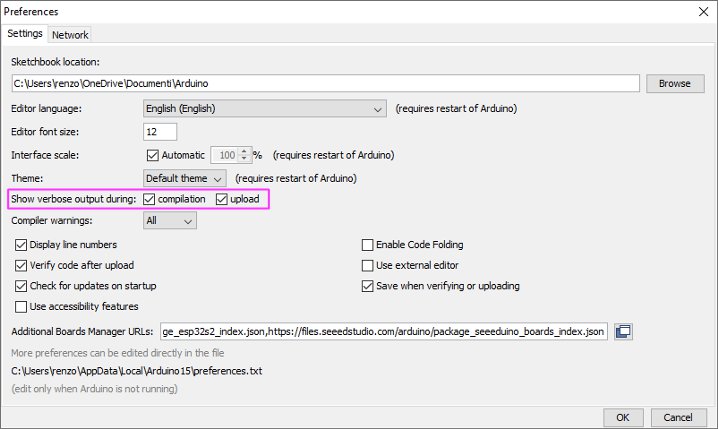

#Esp8266 firmware update arduino ide serial
To use an Arduino as a USB to Serial converter you must disable the onboard Atmega chip. The resistors form a voltage drop so the 5V signal from the FTDI board gets "converted" to 3.3V. If your programmer uses 5V for communication connect everything as the picture shows. The easyest way is to use a FTDI Breakout board (link in the project components list) or using an Arduino Uno as a Serial programmer.Ĭommunication on the module is using 3.3V ( it is not 5V tolerant, not even the RX pin!) so if you happen to have a FTDI breakout that has an on board jumper for voltage selection (like mine) set it to 3.3V and you can skip the 2 resistor and connect the RX line from the ESP directly to the TX on the FTDI. If you can successful power up the module it's time for the next step, setting up a communication to the PC. I have connected its input to the 5v pin of the Arduino and here is the schematics (capacitors are there for smoothing and decoupling, you don't need to use the exact same values but it's recomended):Ĭ2 0.1uF or 100nF - decoupling, must be placed near the voltage regulatorĬ3 100uF - for stabilizing the ESP8266 inputĬ4 0.1uF or 100nF - decoupling, must be placed near the ESP8266 The AMS1117 3.3V version is the perfect coise, it is small and can deliver up to 1A.
#Esp8266 firmware update arduino ide Pc
For example if you have an old PC power supply you can use that or in my example use a voltage regulator, because I will fit these module in my wall switch so it has to be a small one.

Do not even try to connect it to the 3.3v pin on the Arduino or the FTDI breakout because it can't deliver that amount of current. The ESP8266 runs on 3.3V and consumes anything from 20 to 250 mA so to properly power the module you must get a power supply that can deliver that amount of current or the ESP will be unstable if it works at all. As a last resort theoretically you can just solder wires to it (like we will have to do on the 12F version) but it is rather messy and you could short something. You could also use female to male jumper wires as many people do but I don't have them. I made my adapter using male and female headers soldered on a tiny 4x4 square cut out of a prototype PCB. You could buy one on ebay for a few cents but waiting one month just for shipping is silly because you can make one in 5 minutes. Looking at the 01 version we see that it is not very breadboard friendly so we have to make an adapter for programming.

Links for buying everything mentioned in this tutorial are in the PARTS section. The UPDATE FIRMWARE part of this tutorial starts on step 6 in the instructions section. The tutorial for the 12F version is coming when I get the module. I recommend you to buy, if you have not already the ESP-12F version because it is almost the same price like the ESP-01 model but has way more GPIOs and functionality. Basicly the ESP8266 family consists of about 16 versions at the moment, you can read the specs for each version here: So it has limited I/O (Input / Output) pins compared to the new models that come with the same price. Watching the old tutorials for the ESP before buying it everyone was talking about the ESP-01 model and that is the oldest of them. When I first got the ESP8266 which will be the core of my Home Automation project because it will talk to the Raspberry Pi and the other modules via wifi I noticed that I screwed up by buying the oldest model. Thus, we can give a microcontroller internet access like the Wi-Fi shield does to the Arduino, or we can simply program the ESP8266 to not only have access to a Wi-Fi network, but to act as a microcontroller as well so you dont need to use a separate one like Arduino and that is is awesome. Depending on the version of the ESP8266, it is possible to have up to 9 GPIOs (General Purpose Input Output) but our 01 version has only 2 of them.


 0 kommentar(er)
0 kommentar(er)
